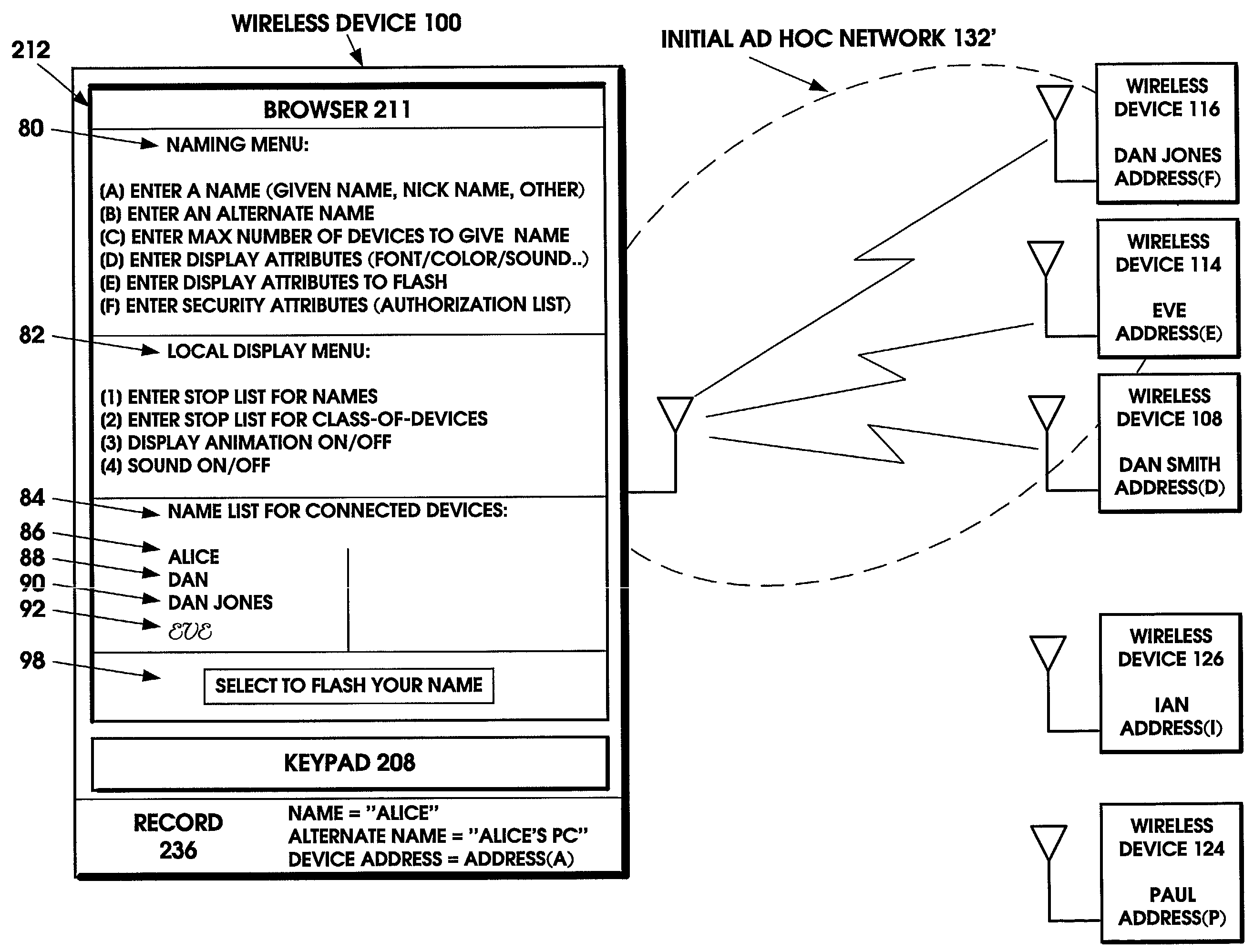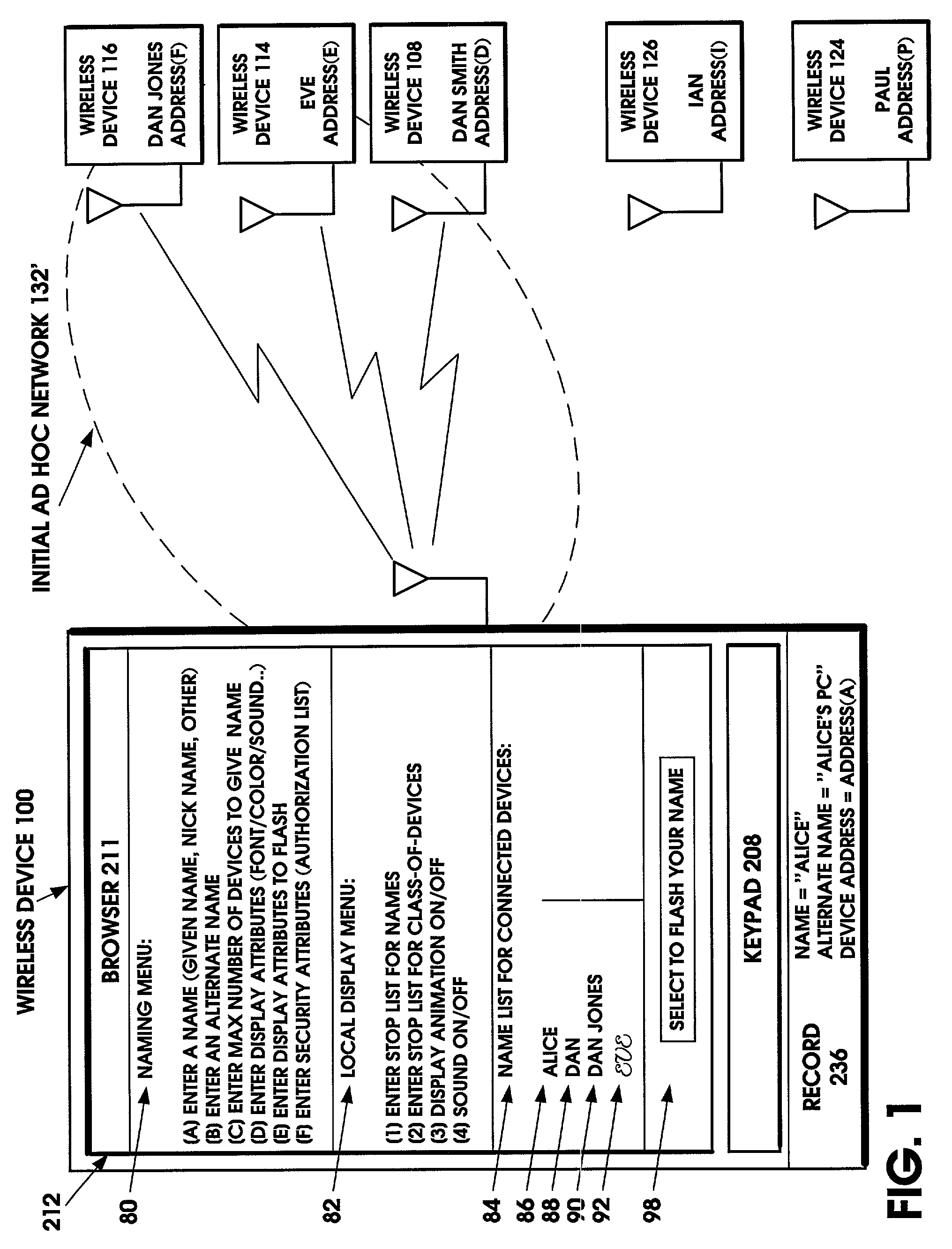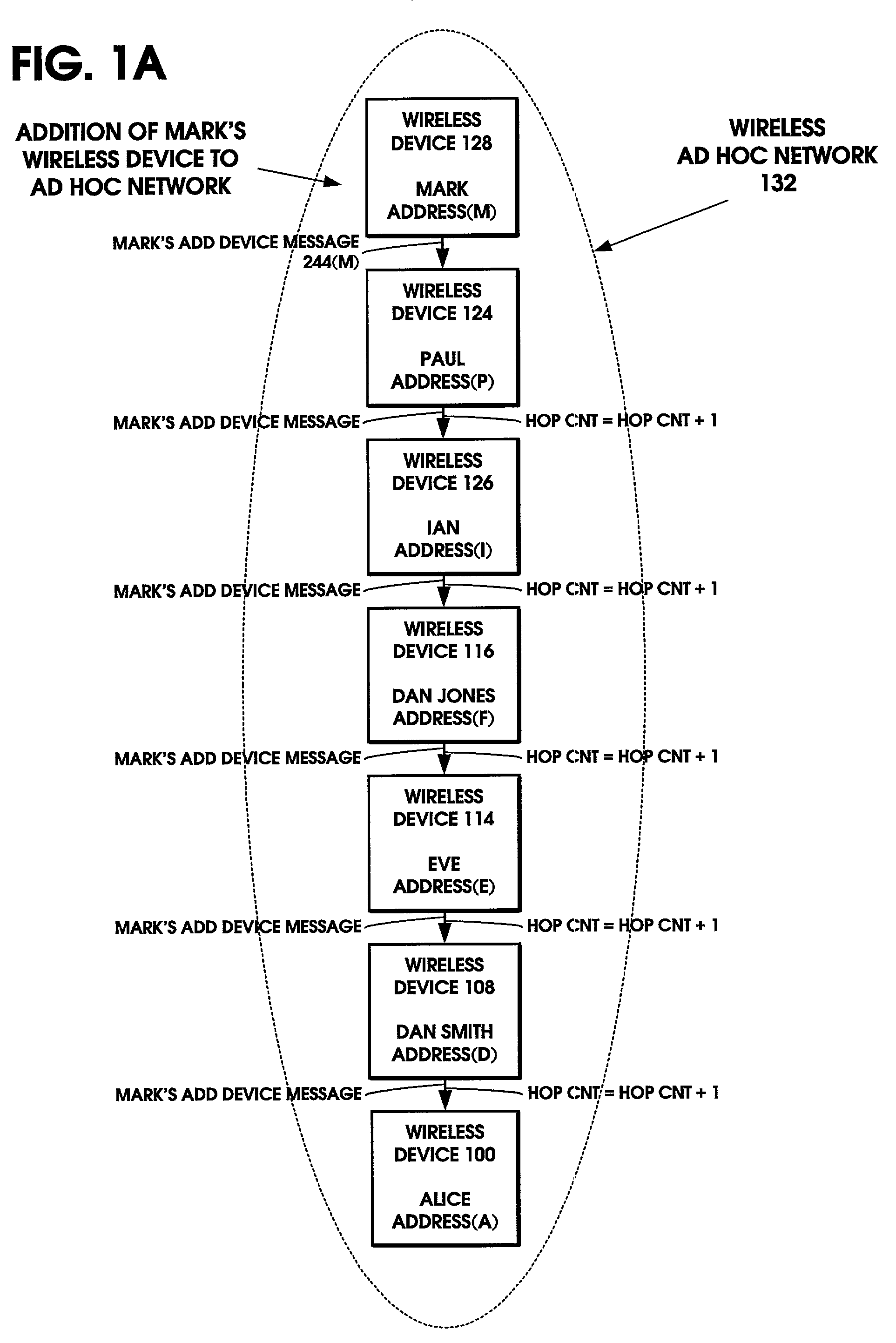Naming distribution method for ad hoc networks
- Summary
- Abstract
- Description
- Claims
- Application Information
AI Technical Summary
Benefits of technology
Problems solved by technology
Method used
Image
Examples
Embodiment Construction
[0061]This specification is organized into five major sections:
[0062]I. Generic Embodiment for All Short Range Wireless Systems
[0063]II. Example Embodiment Implemented in the Bluetooth Standard
[0064]III. Example Embodiment Implemented In The IEEE 802.11 Wireless LAN Standard
[0065]IV. Example Embodiments Implemented In The HIPERLAN Standard
[0066]V. Other Wireless Standards
[0067]I. Generic Embodiment for All Short Range Wireless Systems
[0068]This section is organized into the following subsections:
[0069]A. Overview
[0070]B. Process to Add New Device to Ad Hoc Network
[0071]C. Process to Delete Device from Ad Hoc Network
[0072]D. Process to Change Displayed Name Attributes in Network
[0073]E. Process to Flash Displayed Name in Ad Hoc Network
[0074]F. Process to Join Two Ad Hoc Networks
[0075]G. The Wireless Device
[0076]A. Overview
[0077]FIGS. 1, 1A to 1H, 2A to 2C, 3, and 3A to 3E describe the generic embodiment of the invention, which applies to all short range wireless systems supporting ad...
PUM
 Login to View More
Login to View More Abstract
Description
Claims
Application Information
 Login to View More
Login to View More - R&D
- Intellectual Property
- Life Sciences
- Materials
- Tech Scout
- Unparalleled Data Quality
- Higher Quality Content
- 60% Fewer Hallucinations
Browse by: Latest US Patents, China's latest patents, Technical Efficacy Thesaurus, Application Domain, Technology Topic, Popular Technical Reports.
© 2025 PatSnap. All rights reserved.Legal|Privacy policy|Modern Slavery Act Transparency Statement|Sitemap|About US| Contact US: help@patsnap.com



